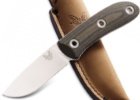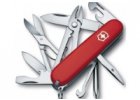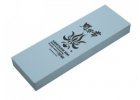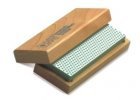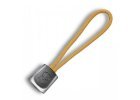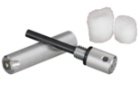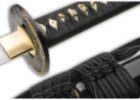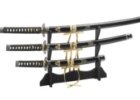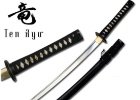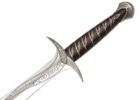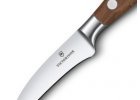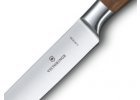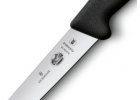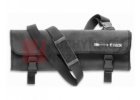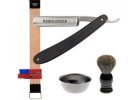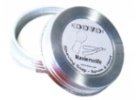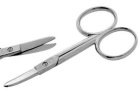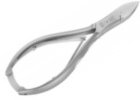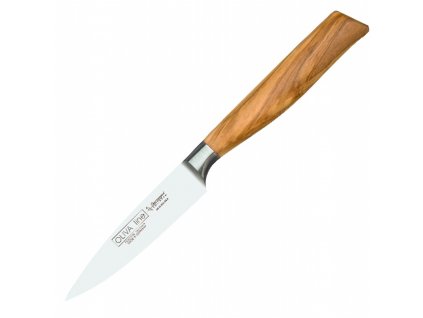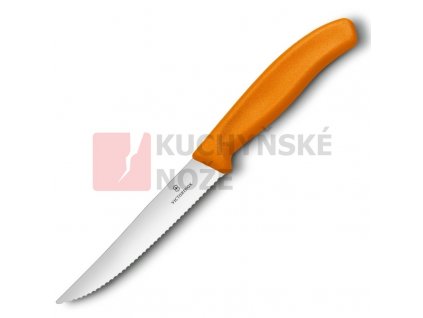Product detailed description
.PROSCIUTTO 30 cmThe first Opinel knife was made by Joseph Opinel in his father's workshop in the small village of Albiez-Le-Vieux near Saint-Jean-de-Maurienne. From 1896 onwards, with three employees, he produced around 60 pieces a day. By 1901, the original workshop was no longer sufficient, so Opinel built a new one, employing fifteen workers. Eight years later, Opinel registered a trademark with the company's logo: the hand with the crown (main couronnée), which has marked all knife blades ever since. The knives were first sold by travelling salesmen, and later Opinel itself began exporting its production to Belgium and Italy. In 1911, one of his knives won a gold medal at the International Exhibition in Turin.
In 1920, production expanded to a newly built factory in Cognin near Chambéry. By the beginning of the Second World War, the company had sold 20 million knives. The company is still owned today by the founder's family. There is also a museum (Le Musée de l'Opinel) in Saint-Jean-de-Maurienne. The company employs around 100 people at its plants in Cognin and Chambéry, and produces between four and five million knives a year.
Materials
Traditional models have a beechwood handle and a high-carbon steel blade. While the latter has a good edge (it does not need to be sharpened as often compared to stainless steel), it must be kept clean and dry to prevent corrosion.
Over the years, a wide variety of variations on the basic type have been developed, using wood from oak, walnut, olive, or hornbeam. Other materials such as hornwood are sometimes used. The blades are also made of stainless steel, making these knives almost maintenance-free.
[edit] Construction
The fixed blade, after turning the locking ring, is ready to close
The construction of Opinel knives is very simple; it consists of three or four parts: the blade, the wooden handle, a riveted metal band holding the blade, and (except for small models) a ring to lock the blade in position, protecting the user's hand from unexpectedly closing the knife. The ring was introduced in 1955.
[edit] Sizes
Size comparison of the Number 2 and Géant knives
Classic Opinel knife models come in ten sizes, numbered from 2 to 12. Opinel knives from 1 to 11 have been produced continuously since 1939. Knife number 8 (with a blade of 8.5 centimetres) is the most used by ordinary users, the larger models are used for camping or as kitchen knives. Later, the model 13, (Le Géant: The Gigant) with a blade of 22 cm, was also produced.
Source: Wikipedia
Podobné produkty
Be the first who will post an article to this item!

The first Opinel knife was made by Joseph Opinel in his father's workshop in the small village of Albiez-Le-Vieux near Saint-Jean-de-Maurienne in France. From 1896 onwards, with three employees, he produced around 60 pieces a day. By 1901, the original workshop was no longer sufficient, so Opinel built a new one, employing fifteen workers. Eight years later, Opinel registered a trademark with the company's logo: the hand with the crown (main couronnée), which has marked all knife blades ever since. The knives were first sold by travelling salesmen, and later Opinel itself began exporting its production to Belgium and Italy. In 1911, one of his knives won a gold medal at the International Exhibition in Turin.
In 1920, production expanded to a newly built factory in Cognin near Chambéry. By the beginning of the Second World War, the company had sold 20 million knives. The company is still owned today by the founder's family. There is also a museum (Le Musée de l'Opinel) in Saint-Jean-de-Maurienne. The company employs around 100 people at its plants in Cognin and Chambéry and produces between four and five million knives a year.














